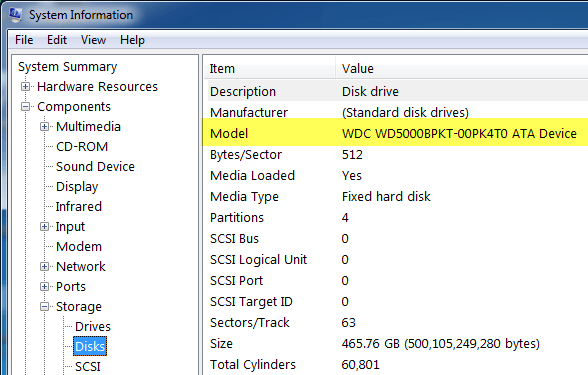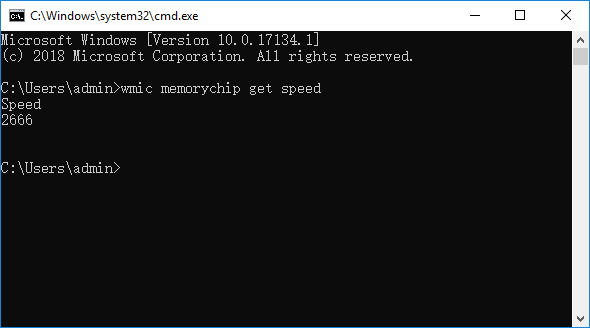
- CHECK DRIVE SPEED HOW TO CHECK HARDWARE
- CHECK DRIVE SPEED CODE MAY DIFFER
- CHECK DRIVE SPEED MAC OPERATING SYSTEMS
Check Drive Speed How To Check Hardware
However, Microsoft is keep releasing updates for Windows 10 to fix known errors.Doesn't support every USB and RAID deviceHere is how to check Hardware Specs of Windows 10 computer, including RAM, Processor, GPU, Motherboard, Storage capacity and type of storage (HDD or SSD).To use the built in defrag tool in Windows 10, follow these steps: Open File explorer using the keyboard shortcut Win + E. Go to the drive that you wish to defrag using the built-in utility.
PCA 80SC/10 150 192 197 240 229 211 214 +2 Internal 12-speed drive 145. If the transfer speed of your USB drive slows down after upgrading computer to Windows 10, then there is possibly a driver issue. Update driver from Windows Update.
Check Drive Speed Mac Operating Systems
It works with Windows 11, 10, 8, 7, Vista, and XP. It's also available for Linux and Mac operating systems, as well as included in a couple of LiveCD/LiveUSB programs. Click on Properties from the additional menu revealed. Switch to the Tools tab.When exporting information, it includes everything, not just a specific result you want to saveTest Hard Drives, SSD Drives, HBAs, RAID Adapters & Storage Controllers. As the industrys leading provider of high-performance storage & network connectivity.Windows 10 continues to use NTFS as the default file system for the permanent storage devices installed on a PC running Windows 10. NTFS is known to provide a better way to index files and keep track of partitions.
However, we can still use such preinstalled tools as Command Prompt, Windows PowerShell and Performance Monitor to access the information based on the self-monitoring, analysis and reporting technology ( SMART) that is available in most storage devices, and always know if the hard disk is healthy or not, ready for work or suffering from hardware problems.If the SMART data says the disk is about to fail soon, you will have a chance to look for a replacement and copy your data to the new disk before it’s too late.Today’s tutorial will show you how to use built-in Windows 10 diagnostics and prediction features to advantage, and you will also learn a few quick methods to check the SMART readings and find out if your hard disk is healthy or nearing its doomsday.An important note. How to analyze disk performance and health with Performance MonitorIn addition to checking the operating system regularly and fixing logical errors and other problems, Windows 10 users are recommended to run diagnostics for hard disk drives ( HDD) or solid-state drives ( SSD) from time to time for monitoring purposes, so that they can always know if the storage devices are healthy and can avoid unexpected hardware failures that may result in a sudden loss of data.The only limitation to the process is that Windows 10 doesn’t have a feature that would monitor the status of hardware without the user’s participation. How to determine a possible hard disk failure with Windows PowerShell

The system will run the search and the Best match section will show you the result you were looking for. Type Command Prompt in the corresponding field. Click the Search button fashioned like a magnifying glass on the Taskbar (you can find it in the lower left corner of the screen) to open the search panel.

Check Drive Speed Code May Differ
Click on it or on the Open button in the right panel, and the Performance Monitor app will be launched.In the table, find the line SMART Predict Failure Check. Type Performance Monitor in the search field, and you will see the result under Best match. For example, click on the Start button in the lower left corner of your desktop, on the Taskbar, and open the search panel. How to analyze disk performance and health with Performance MonitorBesides the two methods based on using the Command Prompt and Windows PowerShell apps that we have just described, there is one more tool to help you check the SMART data and detect hardware disk errors – Performance Monitor.Here is what you do to see if your hard disk is about to fail with Performance Monitor.First of all, the application can be started in one of the several ways. Whatever happens, today online stores offer a wide range of hard disks to choose from according to your preferences, so you can always find a model with the required performance rate, capacity and read/write speed at an affordable price. Similarly to the case with the Command Prompt, if the field Reason contains a value other than zero, you should ask the manufacturer for explanation, as the meaning of this code may differ depending on the actual manufacturer of the hard disk you are using.If you see that the hard disk has a problem or a failure should be expected anytime, the best solution would be to start looking for a new storage device to replace the faulty one.
Windows 10 operating system features several preinstalled tools that can determine how healthy your storage devices are and predict if it is going to fail in the nearest future. ConclusionTo protect your data against unexpected loss you should check your hard disks regularly, especially if there are symptoms suggesting they are no longer as healthy as they used to be. You can always copy important files to another disk which is healthy, or use the backup feature integrated into Windows 10.


 0 kommentar(er)
0 kommentar(er)
